Results 1,841 to 1,850 of 12091
Thread: Anandtech News
-
05-03-12, 08:30 PM #1841
Anandtech: The Samsung Galaxy S III Preview
It's been a long day in London, and hot off the heels of our Galaxy S III performance preview is some discussion about the hardware itself. For any successful OEM, following up on a successful product with another equally successful product is a challenge. It sounds obvious when you write it, but if you look back at almost any other very popular smartphone, you'll see a similar trend. People love watching something become the obvious flagship, then rumor and speculate on what the successor will bring, and hopefully when the curtain goes up the expectations are met. It's no small surprise then that there are some obvious parallels between reactions to the iPhone 4S announcement and today's Samsung Galaxy S III announcement, but after spending all the time available with a demo unit, I've come away decently impressed with what Samsung has crafted.
Read on for our full preview!
More...
-
05-04-12, 12:00 AM #1842
Anandtech: The iPad 2,4 Review: 32nm Brings Better Battery Life
When Apple launched the 3rd generation iPad (as the new iPad), it also dropped the price of the entry-level 16GB WiFi iPad 2 to $399. Apple's products tend to hold their values exceptionally well, so this two-tablet strategy made sense. Apple also proved the success of discount-the-previous-gen strategy with its iPhone line, where you can now buy current, n-1 and n-2 generations of iPhones at prices separated by $100.
What's different with the $399 iPad 2 is that Apple used it as a vehicle to introduce a new hardware platform, or more specifically, a new SoC.
Read on for our analysis of the new 32nm iPad 2,4.
More...
-
05-05-12, 09:30 PM #1843
Anandtech: Media Center for Windows 8: An Add-on At A Nominal Price
AnandTech has been covering the Home Theater PC space since those halcyon days when Windows XP Media Center was rolling out, and the era of dual-core Pentiums promised tolerable playback of DVD-quality AVI files. Despite our, and your, enthusiasm, Microsoft dropped hints throughout the product’s various iterations that Media Center’s role in Windows 8 was minimal. As the Building Windows blog was updated we saw promises that Media Center would be there, but with little in the way of details. And in their latest post, the Windows 8 team reveals the new face of Media Center.
Yeah. We know. The new Media Center is the old Media Center, wholesale. In the post regarding SKUs, the Windows 8 team announced that Media Center would not be included in any of the Windows 8 releases, but would be available for Windows 8 Pro users as an add-on. The add-on will be the same experience found in Windows 7, with no apparent additions. Why take such an apathetic approach to Media Center? Usage.
In data Microsoft published last year, Media Center was launched by 6% of Windows 7 users. For a feature to have such low usage, 10 years after it was first introduced, means that whatever efforts to gain traction have failed, and further efforts are unlikely to have great success. So, deprecating Media Center to the level of a near-orphaned feature is not surprising in the slightest. What was unexpected was the deprecation of audio codecs and DVD playback to the Media Center Pack as well. Codec licensure is something the public can generally ignore, but it’s the reason DVD players will never cost a penny, and why the original Xbox required a dongle for playback. Since Windows XP Media Center, users have been paying for MPEG-2 and Dolby Digital decode support. With Vista, the audio side was bolstered with Dolby Digital Plus, and this was maintained in Windows 7. Windows 8 will not have DVD playback out of the box, though with the addition of the Media Center Pack will gain the appropriate licensure.
News isn’t all bad on the media front for Windows 8, though MPEG-2 for the DVD containers is omitted, it is included for H.264 decoding, alongside Dolby Digital Plus support; all this intended to extend video streaming support. In the era of Ultrabooks and tablets, optical drives are on the decline, so omitting support for DVD-Video playback, and entirely ignoring BluRay support, is sensible.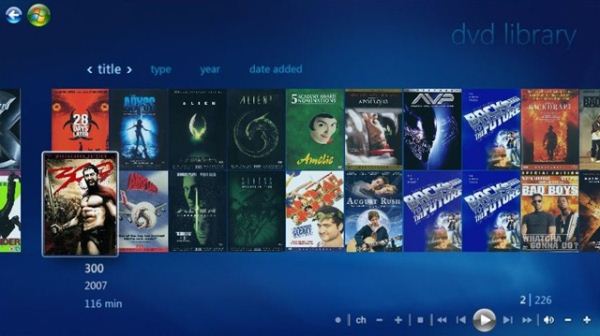 mage courtesy of WinSource
mage courtesy of WinSource
We had been considering doing a quick “State of the HTPC”-style piece, with a focus on the state of MCE and what changes to expect in Windows 8. Now we know, there’s not much to expect. So, instead we’ll plan to explore what competing software has been able to accomplish, particularly MythTV; and how well the latest CableCARD experience pans out. Don’t be surprised, though, if our HTPC software of choice remains Windows 7, well into the future.
More...
-
05-07-12, 05:30 AM #1844
Anandtech: ASRock's High-End Vision 3D 252B HTPC Review
In late 2010, we reviewed the ASRock Vision 3D, and declared it to be the best pre-built SFF (small form factor) HTPC we had reviewed. ASRock duly updated the lineup late last year with the Vision 3D 252B. It took over from the Vision 3D 137B as the flagship HTPC system from ASRock. On paper, the Vision 3D 252B appears to be an ideal candidate to take over the reins of the 137B as the most powerful and capable HTPC in its class. The capabilities come at a considerable price premium compared to what one may be able to build oneself (with a slightly larger chassis and higher rated PSU). With Ivy Bridge based systems already in-store, mobile Sandy Bridge systems are bound to get discounted, tempering the sticker shock a little bit.
Can the Vision 3D 252B live up to the expectations created by its predecessor? Are the updates revolutionary or evolutionary? How much difference does the next-generation CPU and more capable GPU make to the system? Read on for our review.
More...
-
05-07-12, 12:30 PM #1845
Anandtech: Apple releases iOS 5.1.1 Update - Primarily Bugfixes
Apple just pushed out an update for iOS, bringing the version number up to 5.1.1. The update thus far appears to be primarily bugfixes including tweaks to HDR from the lockscreen camera shortcut, stability switching between 2G and 3G on the new iPad, and other issues. The release notes are below from the update information.
We're grabbing the OTA update on our devices (for the 4S the update is around 54 MB, for the 4 the update is around 48 MB) in addition to the full ipsw. As usual the links to the update images directly can be found at the awesome iOS-e-lite page for the impatient. We'll update with any notes about major changes beyond what's in the notes above.
More...
-
05-07-12, 07:00 PM #1846
Anandtech: Intel Z77 Motherboard Review with Ivy Bridge - ASRock, ASUS, Gigabyte, and
So we have survived one of the biggest days of the year for all things computer performance related - the release of Intel's new Ivy Bridge processor. It replaces Sandy Bridge in the landscape of all things processor related, with Ivy Bridge boasting better single threaded performance at lower power usage when at stock speeds. Despite Ivy Bridge being in the same socket as Sandy Bridge, we have a new trio of chipsets to tackle. As in my previous chipset and motherboard preview, AnandTech has of a series of boards ready to put through their paces with the glory of Ivy Bridge.
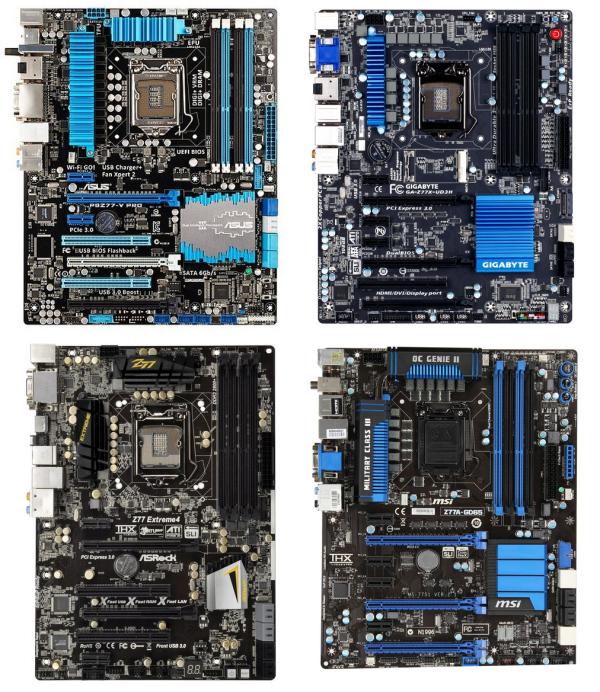
Today our first set of reviews begin with the ASRock Z77 Extreme4, the ASUS P8Z77-V Pro, the Gigabyte GA-Z77X-UD3H, and the MSI Z77A-GD65. Read on for the full review.
More...
-
05-09-12, 01:00 PM #1847
Anandtech: Supermicro Updates X9 Lineup with GPU-Enabled Solutions
NVIDIA's GPU Technology Conference (GTC 2012) is around the corner (May 14-17), and Supermicro has indicated that their GPU-Enabled X9 server and workstation solutions would be showcased at the event.
The X9 series based on the Xeon-E5 class of processors was launched by Supermicro in March. The latest GPU-enabled solutions based on the X9 series are targeted towards HPC (High Performance Computing) applications, with support for upto 256 GB of memory in servers and 512 GB in workstations, PCI-E 3.0 connectivity, 10 GbE and 4x QDR (40 Gb) Infiniband support in a non-blocking architecture.
Supermicro claims to have the highest GPU computing density available today. They also suggest combining the units with the Kepler GPUs (which currently seem to be skimping on compute performance), to obtain green computing solutions.
Without further digression, let us take a look at the systems being launched:
1027GR-TQF:
This system has support for upto 4 GPUs in a 1U configuration. While Supermicro was not very forthcoming on the details of this system, it looks to be likely based on the 1027GR-TRF. The 1027GR-TRF has 4 x PCI-E 3.0 slots, with one of them being low-profile and operating in x8 mode. Any likely updates in the TQF model are probably related to this aspect because the model offers up to 4 double-width GPUs for maximizing compute density.
2027GR-TRF / 2027GR-TRFT:
The only difference between the 2027GR-TRF and the 2027GR-TRFT is related to the networking aspect. While the TRF model comes with a Intel i350 Dual-Port GbE Controller, the TRFT has a Intel X540 10GBase-T Controller. Both of them have 1800W redundant power supplies with 80Plus Platinum level ratings for more than 94% efficiency. There is support for upto 6 GPUs in this 2U form factor system. Four of the PCI-E 3.0 slots are x16, while we have one x8 PCI-E 3.0 in a x16 slot and one x4 PCI-E 2.0 in a x8 slot.
SBI-7127RG:
This GPU SuperBlade system packs 30 GPUs in a 7U form factor, and is claimed by Supermicro to have the
industry's highest compute density.
7047GR-TRF / 7047GR-TPRF:
The 7047GR-TRF is an enterprise-class X9 SuperWorkstation with NVIDIA Maximus certification. Design and visualization tasks are accelerated with an NVIDIA Quadro GPU while compute intensive tasks are powered using up to four Tesla C2075 GPUs. The TPRF model is being announced on paper (Coming Soon!) and supports passively cooled GPUs. Instead of the FC475/409 4x NVIDIA C2075/C2090 GPU cards in the TRF model, this one comes with FM407/409 4x NVIDIA M2070/M2090. The specifications are otherwise identical to the 7047GR-TRF.
Supermicro's GPU-enabled solutions can be seen at the San Jose McEnery Convention Center, May 14-17 in GTC Booth #75.
More...
-
05-10-12, 12:30 AM #1848
Anandtech: HP Unveils New Ultrabooks, "Sleekbooks"
I apologize for the lack of images, guys - we're having some major issues with wireless connectivity here in Shanghai. I'll have hands on galleries up as soon as I can get a stable connection. - Vivek
At the 2012 Global Influencer Summit in Shanghai, HP announced a full slate of new thin-and-light and ultrabook systems, and we've gotten to go hands on with all of them.
The most important products of the lot are the new Envy ultrabooks and sleekbooks. Sleekbook is just a marketing term to describe notebooks that don't meet all of Intel's criteria for ultrabook classification due to CPU and storage component selection, but are otherwise identical to the ultrabook line, including sharing the same 19.8mm thick chassis.
Both of the model lines are available in 14" and 15.6" sizes, and feature Beats audio, glass trackpads with multitouch and gesture support, and optional backlit keyboards. The lid and palmrest are brushed aluminum, while the bottom of the notebook is a soft-touch plastic material. There are two colour options - silver metal/black plastic, or a much more visually arresting black metal/red plastic model. The ultrabook lines are based on Intel's 3rd generation Core ultra-low voltage processors, similar to other ultrabooks, while the sleekbooks come with normal Ivy Bridge processors in the 14" or AMD"s Fusion APUs in the 15.6". The entire lineup has battery life quoted in the 8-9 hour range (depending on screen size and CPU choice). I suspect that the ultrabook and sleekbook versions of the will be mixed up very often (I saw some HP product managers confuse the different demo units more than once here in Shanghai), but what gets lost is that effectively, they're all just different flavours of the same notebook.
HP has always chosen to design its volume platforms as highly modular systems, with consumers and retailers able to chose from a variety of screen sizes, Intel or AMD processors, and a variety of storage/memory/graphics options. For the first time, we're seeing that mentality hit the ultrabook-class of device. HP has designed the new Envy as a single platform with two screen sizes, a range of Intel and AMD processors, a choice of mechanical, solid-state, or hybrid storage options, and optional AMD dedicated graphics (for the Intel models - the AMD models have onboard graphics that are deemed good enough to not merit a dGPU option). If you tick the right combination of boxes (Intel ULV CPUs and hybrid or solid-state storage), the Envy can meet Intel's spec to be classified as an ultrabook. If not, HP calls it a sleekbook. It's a bit confusing, especially in HP's relatively vague press blast, but upon explanation, the new term makes sense.
The Envy devices are pretty nice, with an attractive design (particularly the red and black one) and solid build quality. THe interesting thing here is that the AMD-based Envy 6 (the 15.6" Envy) starts at $599, making it a pretty great value for that price point considering the premium design and features. The base Envy 4 starts at $699, while the ultrabook-spec Envy 4 (essentially the same system, except with a 32GB mSATA caching drive to suplement the mechanical storage) goes for $749. The Intel-based Envy 6 starts at $799 and comes standard with the caching drive, thus meeting the ultrabook spec as well. The AMD-based Envy 6 will be available on June 20, while the rest of the Envy systems are ble now.
HP is also expanding the premium Envy Spectre line with the Envy Spectre XT. Unlike the Spectre 14, the Spectre XT has a 13.3" display and is made entirely of anodized brushed aluminum. The very attractive all-metal design goes in a different direction than the Spectre 14, which was the first notebook to be made primarily of glass. While innovative, the Gorilla Glass chassis led to the Spectre 14 being a bit expensive, as well as thicker and heavier than most ultrabooks tended to be. The Spectre XT, on the other hand, has much more petite dimensions and measures 14.5mm thick at the thinnest point, along with a 3.07lb weight (1.395kg). The Spectre XT certainly feels like a step up in design and build from the Envy, but it's not as unique or as immediately stunning as the Spectre 14. The Spectre XT will hit market on June 8th, with a starting price of $999 with Intel's Ivy Bridge ULV processors and solid state storage. The Spectre XT is aimed squarely at the Samsung Series 9 ($1399) and other premium ultrabooks, so HP seems to be pricing their new portables relatively aggresively. It's a good sign, one that means we'll likely see the entire ultrabook market go more mainstream in terms of price point going forward.
In other ultrabook news, HP announced their first ultrabook meant specifically for the corporate world - the EliteBook Folio 9470m. The 9470m has a 14" screen and weighs a scant 3.6lbs. It squeezes a number of enterprise-centric ports and features into its 19mm thick frame, including VGA, DisplayPort, a full-sized Ethernet port, Smart card reader, fingerprint scanner, embedded TPM security chip, and Intel's vPro security technology. It will come with Ivy Bridge mobile processors and an optional SSD, and is expected to be available sometime in October 2012.
More...
-
05-10-12, 08:30 AM #1849
Anandtech: NVIDIA GeForce GTX 670 Review Feat. EVGA: Bringing GK104 Down To $400
In a typical high-end GPU launch we’ll see the process take place in phases over a couple of months if not longer. The new GPU will be launched in the form of one or two single-GPU cards, with additional cards coming to market in the following months and culminating in the launch of a dual-GPU behemoth. This is the typical process as it allows manufacturers and board partners time to increase production, stockpile chips, and work on custom designs.
But this year things aren’t so typical. GK104 wasn’t the typical high-end GPU from NVIDIA, and neither. it seems. is there anything typical about its launch.
NVIDIA has not been wasting any time in getting their complete GK104 based product lineup out the door. Just 6 weeks after the launch of the GeForce GTX 680, NVIDIA launched the GeForce GTX 690, their dual-GK104 monster. Now only a week after that NVIDIA is at it again, launching the GK104 based GeForce GTX 670 this morning.
Like its predecessors, GTX 670 will fill in the obligatory role as a cheaper, slower, and less power-hungry version of NVIDIA’s leading video card. This is a process that allows NVIDIA to not only put otherwise underperforming GPUs to use, but to satisfy buyers at lower price points at the same time. Throughout this entire process the trick to successfully launching any second-tier card is to try to balance performance, prices, and yields, and as we’ll see NVIDIA has managed to turn all of the knobs just right to launch a very strong product.
More...
-
05-10-12, 08:30 AM #1850
Anandtech: MIPS Technologies Updates Processor IP Lineup with Aptiv Series
ARM has been making waves over the past two years with plenty of processor and graphics IP announcements, but they are not alone in the game. MIPS Technologies, almost as old as ARM itself, also licenses RISC processors. With licensees like Broadcom and Sigma Designs, they have undoubtedly held the upper hand in the home entertainment / set-top-box arena as well as the networking space. However, success in the fast-growing mobile / tablet space has been hard for MIPS to come by, thanks to ARM being well-entrenched in that market.
Today, MIPS is introducing a range of new processor IP cores in the Aptiv lineup, similar to ARM's Cortex. The members of this lineup range from small microcontroller cores to triple dispatch superscalar ones. By introducing a member at each performance level to compete directly with offerings from ARM, MIPS has made its move in the processor IP battle. Read on for our analysis of the announcement and the processor architectures.
More...
Thread Information
Users Browsing this Thread
There are currently 16 users browsing this thread. (0 members and 16 guests)






 Quote
Quote
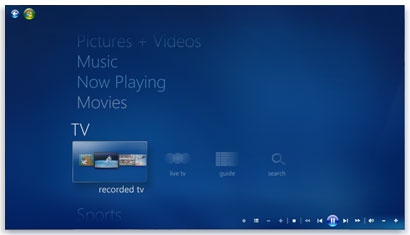
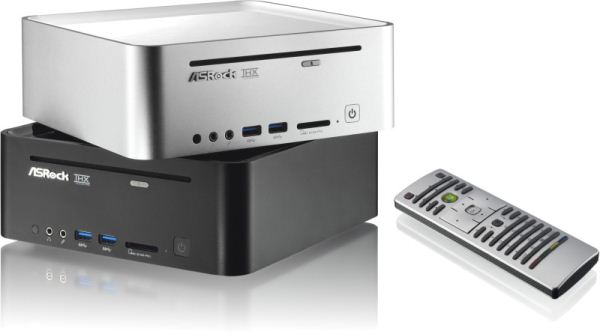

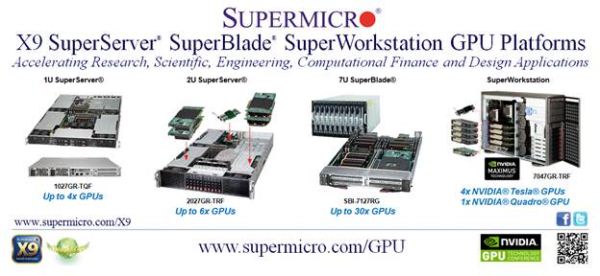
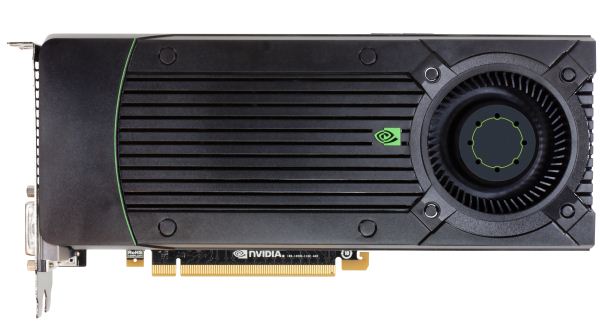

















Bookmarks